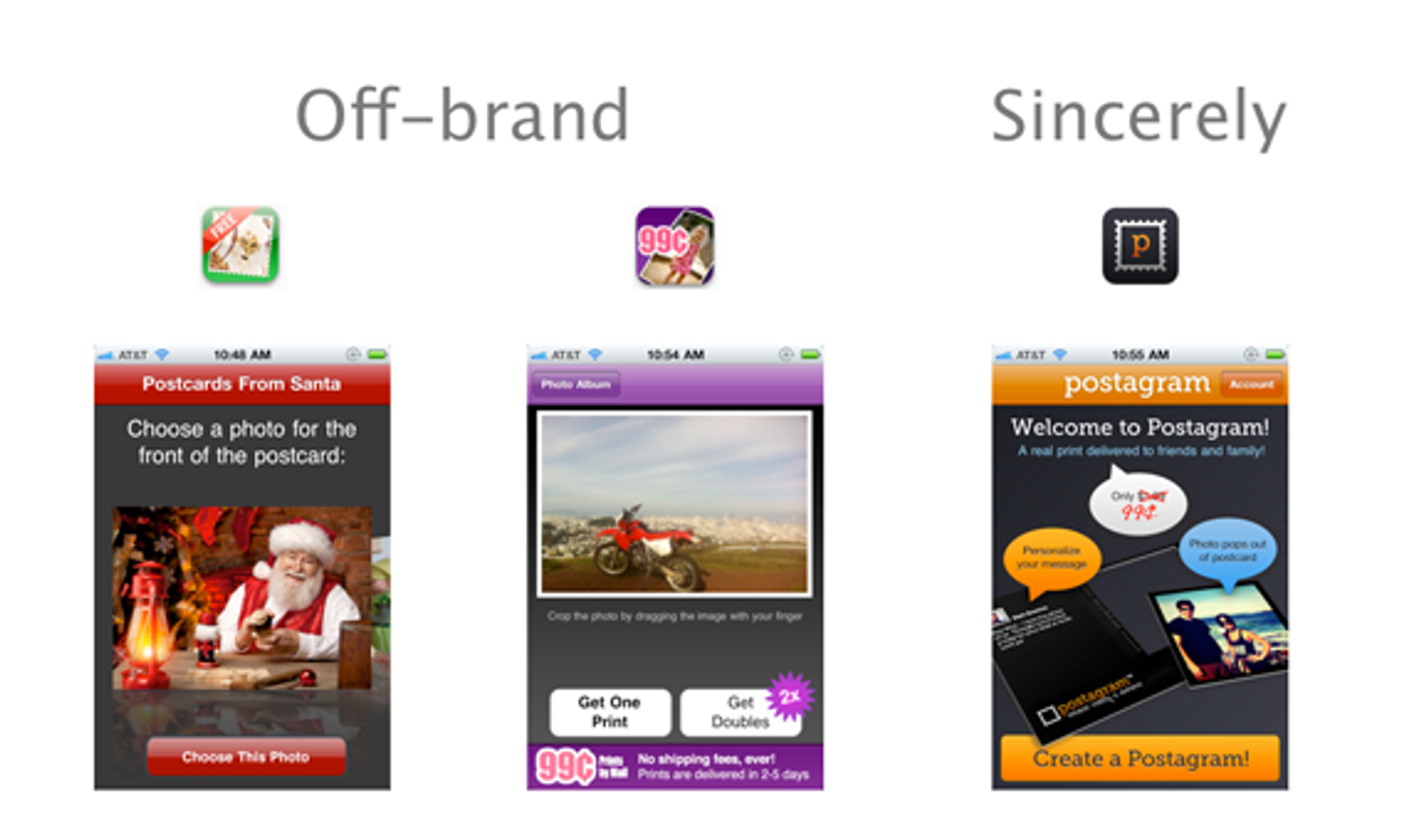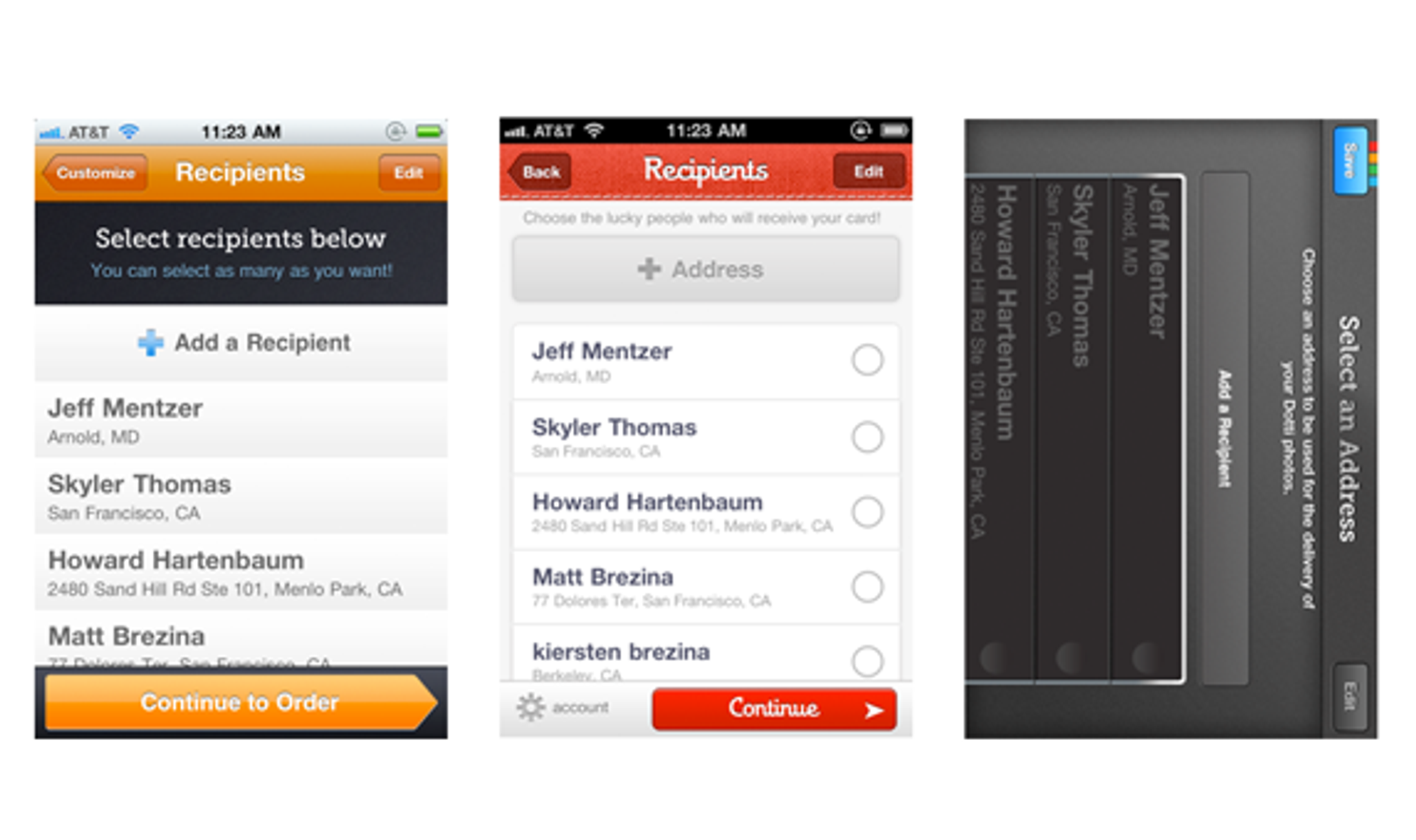Matt Brezina is the CEO of Sincerely, a company whose goal is to help scale the thoughtfulness of relationships by helping users send cards and gifts from their mobile phones. In this First Round Quickfire discussion, Brezina gives tips on rapid app development.
Over the last nine months, Sincerely has launched five successful products — favorites like Postagram. But what you probably didn’t know is that the company’s actually released closer to fifteen apps, and a number of them have simply been behind the scenes. Utilizing rapid app development, Sincerely has been able to learn more about the products they’re building, the customers on the other side, and even a little bit more about themselves as a company faster and cheaper than ever before.
Answering Lingering Questions
Mobile eCommerce is a relatively nascent market, which left Sincerely, a company looking to make a splash in that space, with a lot of unanswered questions. Would people be willing to give their credit cards through an iPhone app; were they willing to spend $20, or is $.99 the optimal price point; what should purchase flows look like; what in-app messaging do people care about; does SEO mater; etc. While the questions themselves will differ, you will likely have a similar objective: learning the answers to all of the questions as quickly as possible.
Doing so comes down to one simple thing: perfecting the minimum viable product, the simplest form that’ll teach you the most amount of information. Here are some of Matt’s favorite tactics to get the most information the fastest and at the lowest cost.
Off-Brand Testing

The reason you haven’t heard about some of Sincerely’s apps is because they do a lot of “off-brand” testing.
If you develop for iOS, it’s relatively easy to do — all you need is a separate developer account, which will run you about $99/year. This is a fool-proof way to ensure that neither the press or your users will come across what you’re working on.
Testing in Canada
Canada is a great place to flush out an idea and test your product before you launch in your major market.
Sincerely’s off-brand products are uglier and less polished and you don’t want those anywhere near your more premier products (i.e. Sincerely’s Postagram).
De-emphasize Visual Design
It’s particularly hard in an organization where you have amazing product engineers that care about product quality, but you have to de-emphasize visual design during testing of products — especially the ones that are off-brand.
Pro-tip: don’t de-emphasize interaction design. That should be one of things you are constantly trying to learn about and do correctly. And while it may be a little scary at first, let your engineers do their own visual design.
Reuse Common Components

The address book component of Postagram, Sincerely, and even the Dotti disposable camera are all pretty much the same: They use the same back-end and the visual components are nearly identical.
If you have something that works well, the best use of your time means using it again somewhere else.
Find Cheap Disposable Users
Testing off-brand means no press, and no press means you’re not going to be emailing your existing (happy) customers about a new product or letting them know that you’re testing a price-point.
With this in mind, run campaigns on StumbleUpon, AdMob, iAds, etc. — they’re perfect places to find cheap, disposable users on these platforms.
RIP [Your App Here]
You need to create an environment where when you kill an app — which will happen — the developer knows it’s nothing against him or her.
The mentality needs to be: “We learned what we needed to learn from that app and now we’re going to kill it.”
Test on Android, Then Implement on iOS
There’s a big difference between the app environment on Android and iOS — one of which is how long it takes an app to be approved. It’s quite a bit longer for iOS and that’s a damper if you’re trying to move quickly.
For Android, though, there’s essentially no approval process which means you can have something in the Play Store within a few hours. Sometimes it’s worth testing small changes in your Android app and then implementing them on iOS if they’re working.
People coming from the web world — think of Android as the closest thing we have to the web world in the mobile app space.
APIs Are Everything
Sincerely’s snappy JSON API allows any developer to do payment processing, order fulfillment, user accounts, address books, transactional emails, connect the printers, etc. This makes the product engineers’ jobs much easier, effectively eliminating the need to mettle with databases.
Creating an API will also allow you to commercialize your work, thanks to third party apps who can build on top of your endeavor. At Sincerely, over thirty apps are using the photo-sending library they developed.
The externality is that you’ll have the ability to learn from the applications that use your API. For Sincerely, these findings have included the type of cards people like to send to how frequently they make collages. While your conclusions may be radically different, rapid app development can be facilitated by third party discovery.
Team Structure

The Sincerely API relates directly to how they structure their team. While they’re small now — generally just a designer and an engineer own a product — your goal should be to let go. Allow your engineers to have four to six hours of uninterrupted magic each day.
Brezina finds it’s where they get their biggest “bang for their buck,” and he structures the organization and product discovery process so that this magic can happen.
